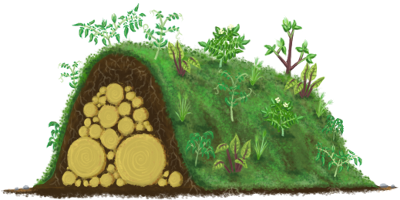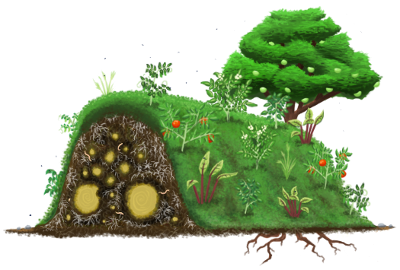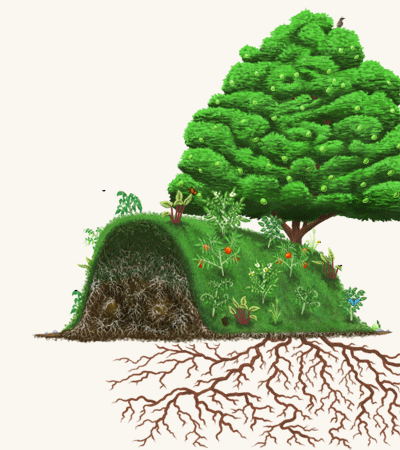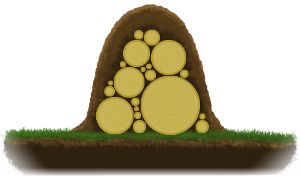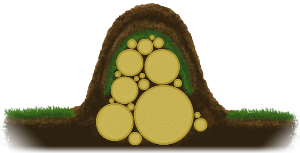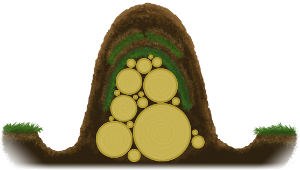No one wants to be sick when you live in the middle of nowhere.
It's cold and flu season. Here ya go. Courtesy of Just Naturally Healthy
 The
immune system is responsible for deciphering safe from unsafe pathogens
and regulating inflammation in our bodies. It is the body's protection
against bacteria, viruses, cancer, and other illnesses. A complicated
and intricate system, we are just beginning to understand the influence
our lifestyle has on it. More and more research highlights the impact
our diet and environmental exposures have on maintaining balance within
our body's immune system.
The
immune system is responsible for deciphering safe from unsafe pathogens
and regulating inflammation in our bodies. It is the body's protection
against bacteria, viruses, cancer, and other illnesses. A complicated
and intricate system, we are just beginning to understand the influence
our lifestyle has on it. More and more research highlights the impact
our diet and environmental exposures have on maintaining balance within
our body's immune system.There is no magic key to creating a strong immune system, it's hard to deny the impact diet and lifestyle have on health. Keeping a strong immune system helps protect you from infections with viruses and bacteria and other forms of illness. Eating in moderation and keeping your diet varied will provide you with a mixture of protective vitamins, minerals, and nutrients to keep your body happy and healthy.
What's the best way to boost your immune system? It's simple: lead a healthy, balanced lifestyle.
The Importance of Regular Sleep
Regular sleep—at least eight hours per night—will help keep cells in the system working optimally. Wash your hands regularly before eating and after being out in public.
Exercise
 Regular
exercise of at least 20 to 30 minutes every day increases the ability
of the immune system to function properly. When it comes to exercise,
challenge yourself. Do something you enjoy. Exercise should be fun, make
you smile, and even laugh. Think out of the box: it can be dancing,
jumping rope, hiking, or walking. If you've never exercised, then start
with two minutes per day and add one minute each day until you've built
up to 20 minutes.
Regular
exercise of at least 20 to 30 minutes every day increases the ability
of the immune system to function properly. When it comes to exercise,
challenge yourself. Do something you enjoy. Exercise should be fun, make
you smile, and even laugh. Think out of the box: it can be dancing,
jumping rope, hiking, or walking. If you've never exercised, then start
with two minutes per day and add one minute each day until you've built
up to 20 minutes.Is regular exercise already part of your routine? Then change it up. Love to hike? Throw on some running shoes and hit the nature trail. Have young children or a family? Head outdoors and play tag, basketball, tennis, or soccer. The important thing is to create a habit of daily exercise.
Maintain a Healthy Weight
You should also maintain a healthy weight. Buy a scale and weigh yourself the same time each week. Set attainable goals: a weight loss goal of two pounds a week seems much more attainable than a goal of 25 pounds overall.
Know your body mass index (BMI). The equation is weight (pounds)/height (inches) 2 x 703. A BMI of 20 to 24.9 is a sign of a healthy weight. If you don't know your BMI, speak with your doctor to help you calculate it or use an online calculator (nhlbisupport.com/bmi/). Being underweight, overweight, and obese are states of malnutrition and put stress on your body. Fat cells increase inflammation within the body and that, in turn, impedes the immune system's ability to function. If you are overweight or obese, even a weight loss of two to five pounds can improve your immune system and put you on the path to a healthy lifestyle. Start small, make goals for yourself, and work towards them. Enlist the help of family and friends to support you in your goal of a happy and healthy weight. The rewards are great and you'll start feeling more energetic with each day.
Diet
Eat a colorful diet rich in fresh fruit, fiber, and plant-based products. Teach your children to eat a rainbow of foods each day. Vitamins, antioxidants, and bacteria are natural ways to maintain this balance. Vitamins are organic compounds our bodies need in limited amounts—some we get only through our diet. Bacteria manufacture others in our systems. Among those critical to the immune reaction are vitamins A, C, D, E, and zinc.
The fall is a natural time to eat foods rich in vitamin A. Orange, yellow, and green foods—like carrots, sweet potatoes, butternut squash, leafy vegetables, and cinnamon—are rich sources of vitamin A along with milk and eggs. Strive for at least 2,500 to 3,000 IU a day, but no more than 10,000 IU a day.
Citrus fruits and vegetables abundant in vitamin C are readily available in the winter months—you can easily reach a goal of 500 mg a day by regularly adding oranges, grapefruit, and red peppers to your diet.
Our skin is able to manufacture vitamin D with sun exposure—otherwise milk, eggs, and fatty fish like tuna and salmon are natural sources of vitamin D.
Vitamin E is a natural antioxidant (antioxidants are the compounds that protect cells from the damaging effects of free radicals) found in nuts, seeds, and vegetable oils. Toss one ounce of sunflowers onto your spinach salad and you're halfway towards your goal of 15 mg a day of vitamin E.
Zinc also has a positive effect on the immune system. Five oysters provide the daily recommended serving of zinc. Incorporate servings of fruit, dairy, vegetables, nuts, and grains into each meal. Reach for healthy snacks.
 Stop Smoking
Stop SmokingDo you smoke? Quit. Are others around you smoking? Encourage them to quit. Tobacco smoke interferes with your body's ability to clear bacteria and viruses from your respiratory mucosa. Research shows that the components in tobacco smoke change your immune system, create free radicals, and increase inflammation in your body. Exposure to secondhand smoke in children leads to increased ear infections and asthma attacks.
Feed Your Gut
More and more research points to the critical role of the microgenome (community of bacteria) living naturally and in balance in our guts. These bacteria help teach our immune system what's safe and not safe. How can you influence these bacteria? Through the food you eat!
Eating a diet rich in lean protein and fresh fruits and vegetables helps support the natural balance of healthy bacteria living in your intestines. These foods provide your body with vitamins, antioxidants, and helpful bacteria essential to proper immune system function.
Probiotics and prebiotics are ways to change the community of bacteria living in our intestines. Probiotics containing bifidobacteria and lactic acid bacteria (lactobacillus)—like those found in yogurt and supplements—help replace naturally occurring bacteria living in our guts.
Prebiotics are nondigestible food ingredients that stimulate the growth and/or activity of lactobacillus and bifidobacteria in our intestines. By feeding these bacteria, they help us digest food, decrease inflammation, and improve the balance of our immune system. No specific food is a prebiotic: foods release prebiotics through the digestive process. Rich sources of prebiotics are soybeans, raw oats, and yacón, and foods rich in inulin like Jersualem artichoke, jicama, and chicory root.
Despite washing your hands, getting regular sleep, and eating a healthy diet, did you get a cold? You're not alone: most adults in the US suffer from one to three cold viruses a season. Use of zinc gluconate at the first sign of sickness can reduce the duration of a cold, so make sure you have it on hand. Get plenty of rest, make sure you drink plenty of fluids, and stay home from school or work to prevent the spread of the virus. Our immune systems have a tough job to do—follow these tips through the cold and flu season and beyond to give your system the best chance to keep you healthy day in and day out.






























